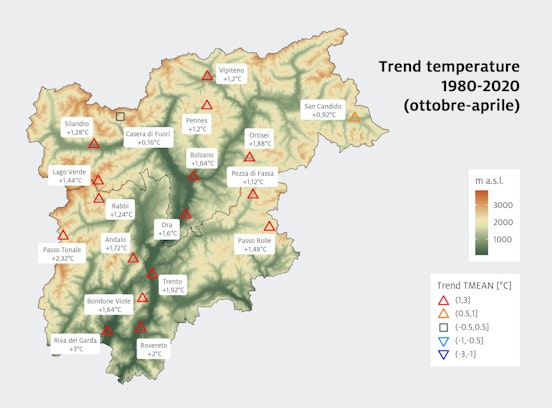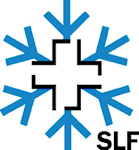Snowtinel
Snowtinel: Sentinel-1 SAR assisted catchment hydrology: toward an improved snow-melt dynamics for alpine regions.
- Deutsch
- English
- Italiano
- Project duration: -
- Project status: ongoing
- Funding: Provincial Joint Programme – IT-SNF (Province BZ funding / Project)
- Website: Project website https://snow-and-atmosphere.gitlab-pages.wsl.ch/snowtinel/
- Institutes: Institute for Alpine Environment, Institute for Earth Observation
EN: Snowtinel: Sentinel-1 SAR assisted catchment hydrology: toward an improved snow-melt dynamics for alpine regions.
Background
Snowmelt is an essential component of the water budget in mountain regions and current climate change is rapidly changing its dynamics. The recent increased availability of radar remote sensing products offers great potential for improving our capability to understand and monitor snowmelt processes at high spatial and temporal resolution. However, a better understanding of the physical interactions of the radar signal with the wet snowpack is needed to fully exploit its information.
Research Goals
The SnowTinel project aims to better exploit the information on snow melt dynamics provided by the Synthetic Aperture Radar (SAR) on board of the satellite mission Sentinel-1. The knowledge acquired at the small, remote sensing radar plot scale of Davos Laret (Switzerland) will then be compared to existing observations and integrated with existing distributed snow physical models and methods of different complexity in a very well-monitored small catchment (Dischma Valley, Davos, Switzerland). The best configurations will then be tested on the operational scenario of a large mountain catchment (Venosta Valley, South Tyrol) where accurate snowmelt estimation is needed since this area is already facing relevant water use conflicts as water is intensively used both by agriculture and hydropower production.
By addressing the fundamental scientific issues behind radar-snow interactions, this project will be able to explore the feasibility of a near – real-time monitoring system that can be extended operationally over large areas to deliver practical benefits to society.
Applied relevance
Climate change is quickly altering the snowpack distribution, with major consequences such as an increase in water availability in winter/early spring and a decrease in summer. This implies the implementation of adaptation measures for water resource management (i.e., hydropower, agriculture), which require precise knowledge of snowmelt temporal and spatial evolution. However, future changes in snowmelt rate in a future warmer world are uncertain, since it is not clear if a warmer world will imply slower or faster snowmelt. The improved knowledge of snowmelt timing provided by this project could provide valuable knowledge for climate impact research and mitigation.
Since all major catchments in the Alps are already used for hydropower production, there is some interest in investigating smaller, alpine catchments. But the requirements of environmental regulations make it very unappealing since some long-term monitoring must be set up to provide some data before even considering the feasibility. If this project could deliver reliable estimates of snowmelt for alpine catchments based on satellite products, the current environmental regulations could be fulfilled without preventing optimum use of the potential resources, which could in turn help alpine communities to be more energy self-sufficient.
Keywords
Remote sensing, snow hydrology, snow cover, water resources, Synthetic Aperture Radar
Project website
https://snow-and-atmosphere.gitlab-pages.wsl.ch/snowtinel/
Premier V, Marin C, Bertoldi G, Barella R, Notarnicola C, Bruzzone L (2023)
Journal article
The Cryosphere
More information: https://doi.org/10.5194/tc-2022-146
Bertoldi G, Premier V, Bozzoli M, Marin C (2023)
Presentation/Speech
Conference: A European vision for hydrological observations and experimentation | Naples | 12.6.2023 - 15.6.2023
Premier V, Ciapponi N, Bozzoli M, Bertoldi G, Rigon R, Notarnicola C, Marin C
(2023)
Presentation/Speech
Conference: EGU23 General Assembly | Vienna | 23.4.2023 - 28.4.2023
More information: https://doi.org/10.5194/egusphere-egu23-1557
Premier V, Marin C, Bertoldi G, Notarnicola C, Bruzzone L (2022)
Presentation/Speech
Conference: SnowHydro 2022 | Grenoble (online) | 1.2.2022 - 4.2.2022
Bertoldi G, Bozzoli M, Crespi A, Matiu M, Giovannini L, Zardi D, Majone B (2022)
Presentation/Speech
Conference: SnowHydro 2022 | Grenoble (online) | 1.2.2022 - 4.2.2022
More information: https://snowhydro2022.sciencesconf.org/
Bertoldi G, Crespi A, Bozzoli M, Matiu M, Giovannini L, Zardi D, Majone B (2022)
Presentation/Speech
Conference: AGU Fall Meeting 2022 | Chicago | 12.12.2022 - 16.12.2022


